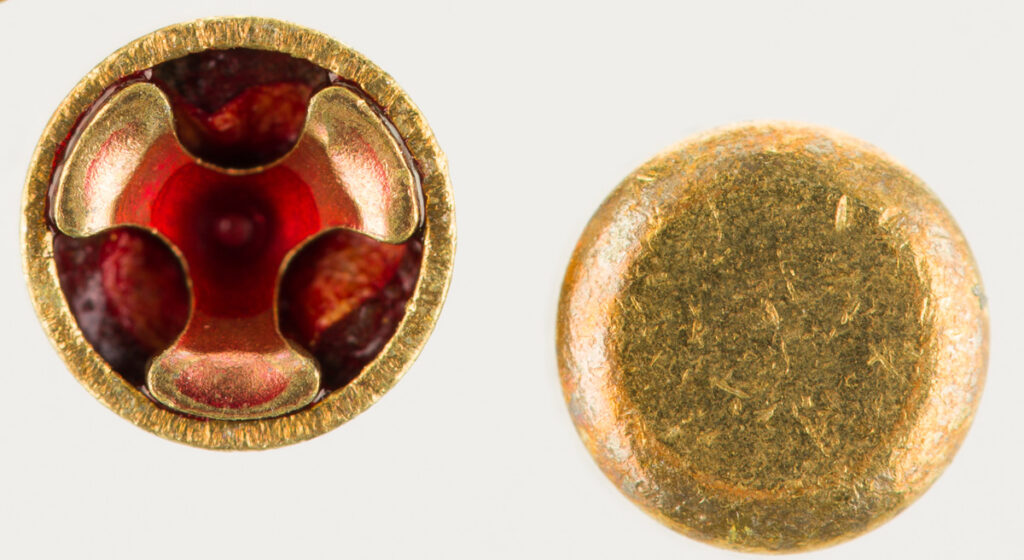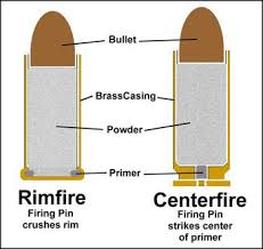8 Simple Techniques For Federal Primers
Wiki Article
Things about Primers In Stock
Table of ContentsGet This Report about Reloading PrimersFacts About Primers For Sale UncoveredThe Rifle Primers StatementsThe Facts About Rifle Primers UncoveredEverything about Small Pistol Primers
Part of the firearm cartridge for launching propellant combustion In firearms and artillery, the guide () is the chemical and/or tool accountable for starting the propellant burning that will press the projectiles out of the gun barrel. In early black powder weapons such as muzzleloaders, the primer was basically the same chemical as the primary propellant (albeit typically in a finer-powdered type), however put right into an outside flash pan, where maybe ignited by an ignition resource such as a slow suit or a flintlock though some muzzleloaders have guides like cap weapon caps. remington primers.
In artillery the guides are often a separate part, placed inside the barrel to the rear of the main propellant chargebut there are other instances of weapons, consisting of for example some automatic tools, designed to shoot cartridges with important electric guides.
The 2-Minute Rule for Small Pistol Primers

This opening was loaded with finely ground powder, which was then ignited with a hot coal or torch. With the arrival of hand-held guns, this ended up being an undesirable means of shooting a gun. Holding a burning stick while trying to pour a fee of black powder very carefully down a barrel threatens, and also attempting to hold the weapon with one hand while simultaneously targeting at the target and looking for the touchhole makes it really tough to fire properly. [] The initial attempt to make the process of firing a little arm much easier was the "matchlock".
, and also dried out. After the gun was loaded and the touchhole primed with powder, the burning tip of the suit was positioned so that the lock would certainly bring it right into call with the touchhole.
The 6-Second Trick For Pistol Primers
This brought the suit to the touchhole, sparking the powder. With careful attention, the slow-burning match could be maintained melting for extended periods of time, and also making use of the lock system made rather exact fire possible. The following transformation in ignition modern technology was the "wheel-lock". It made use of a spring-loaded, serrated wheel which scrubed versus an item of iron pyrite, similar to a contemporary lighter.

The protected flashpan additionally provided some capability to hold up against negative weather. The wheel-lock delighted in only a brief duration of appeal before being superseded by an easier, more durable design.
Unknown Facts About Remington Primers
The flint was held in a spring-loaded arm, called the "cock" from the similarity of its activity to a pecking hen. The penis turned through about a description 90-degree arc and also was held in the tensioned, or "cocked" position by a trigger.The "half-cock" position held the cock midway back, and utilized a deep notch to ensure that drawing the trigger would certainly not release the penis. Half-cock was a security placement, made use of when loading, storing or carrying a packed flintlock. The "full-cock" placement held the dick completely back and was the setting where the gun was fired.
It worked as both a flashpan cover and also a steel striking surface for the flint. The frizzen was hinged and also spring-loaded so that it would certainly lock in the open or shut setting. When shut, the striking surface was placed to ensure that the flint would certainly strike at the correct angle to generate a trigger.
Getting My Reloading Primers To Work
The flintlock mechanism was easier and also stronger than the wheel-lock, as well as the flint as well as steel provided an excellent, reputable source of ignition. The flintlock continued to be in army solution for over 200 years, and flintlocks are still made today for historic re-enactments and also muzzle-loading target competitors, as well as for hunters that appreciate the added obstacle that the flintlock supplies.Percussion ignition was designed by Scottish clergyman Rev. Alexander John Forsyth in 1807 however required further improvements before it was slowly accepted in the 1820s to 1830s. By the center of the 19th century, the percussion or caplock system was well developed. It was adopted by both sides in the American Civil Battle, as it was easier and also a lot more trustworthy than the flintlock.
The flashpan and frizzen were eliminated as well as changed by a small, hollow horizontal cyndrical tube (drum) screwed right into the bored-out and also tapped flash opening as well as lugging a "nipple" over which the cap can be fitted. A "hammer" which likewise had half-cock (for filling and using the cap) and full-cock placements replaced the penis.
Report this wiki page